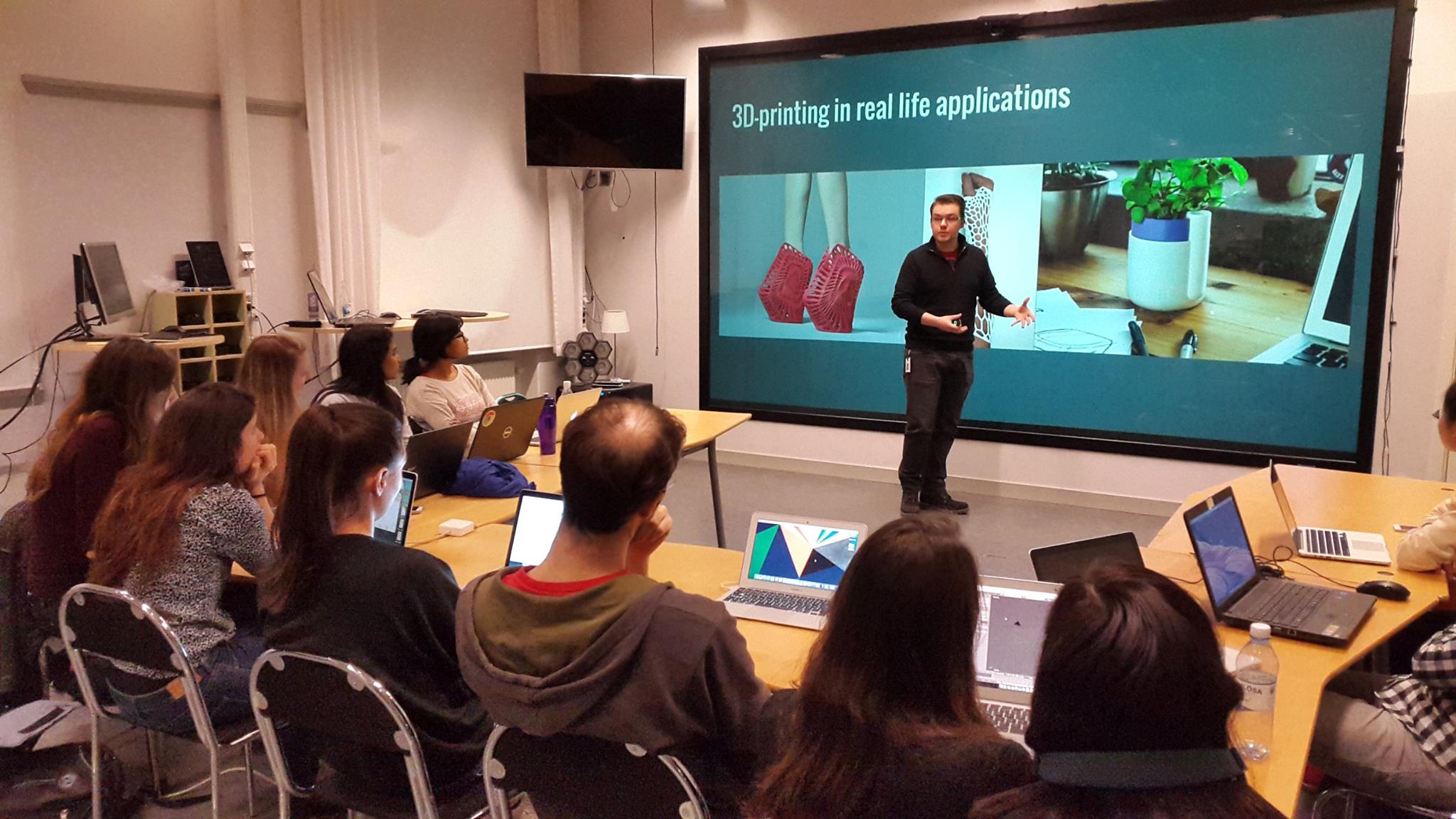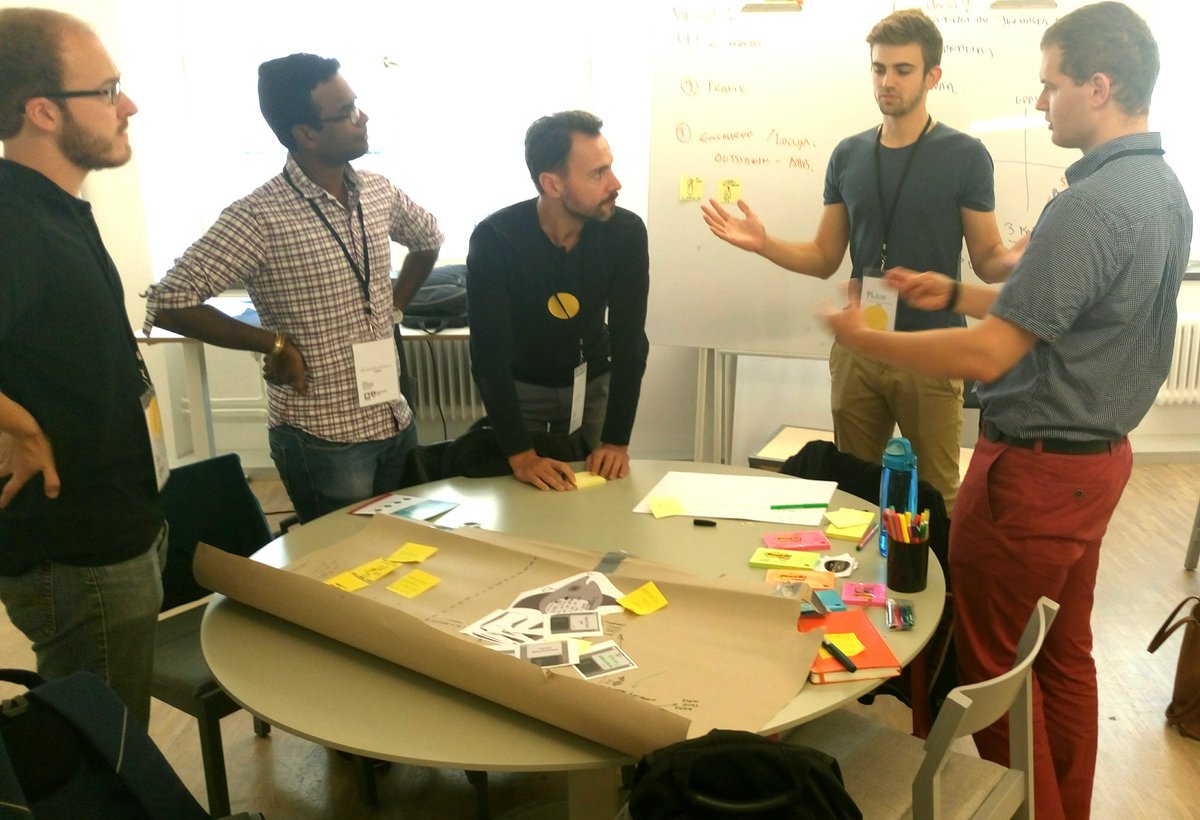… or: Don’t Think Too Much A/Bout Lean Failure of Fashionistas.

On November 22, 2016 I visited the Lean Tribe Gathering 41 in Stockholm, together with fellow student Fuji King (name modified by the editor). The event took place in SUP46 (Start-Up People of Sweden), Regeringsgatan 65, 3rd floor, 111 56 Stockholm from 17.30-20.00.
What are LeanTribe Gatherings?

Lean Tribe is a Swedish association of enthusiasts for agile and lean software development that organizes and supports meetings around this topic and disseminates information through its website. DevTribe and BizTribe are sister organizations of LeanTribe.
Main Theme: Lean Startup in Practice
The event refers to a statement of Eric Ries that says „Using the Lean Startup approach, companies can create order not chaos by providing tools to test a vision continuously“ (Eric Ries, 2011). According to this, the four invited speakers were entrepreneurs and/or change agents in IT companies with experience in leading towards value innovation, who work with fast feedback loops toward smart product development. The event was sponsored by Google.
The Presentations
Jonas Hombert (Optise AB): A mindset for quick failure and slow success.
Jonas Hombert aligned his talk around the three key aspects of failure, flexibility, and feeling. According to him failure has to be a mindset, it is something that happens when you are trying new things. It is a transitional state and not something that is fixed, as there will be a point where we will start to succeed. He recommends to celebrate failure (e.g., with a failure wall) and learn from it. Regarding flexibility he recommends that whenever we build new things we can never be certain that it ist he right thing, we don’t know how many iterations are necessary – therefore we should focus on doing things right rather than on perfection. Especially engineers have to change their mindset, as „whatever we release will fail“ – at least at the beginning. We have to change our perception and search for tight feedback-cylces to fail fast. Feeling: instead being a highly data-driven business it is important to focus on the local rather than the global maximums – and ask „is a button the right thing“ instead of „what is the right color of the button“. Don’t just focus on the data, but do radical new things, too! Take a step back from optimizing.
Cecilia Borg (Looklet): Expanding without the pain – DevOps and values.
Cecilia Borg has already 15 years experience in pain while growing IT companies. Within her last company, King, she took backend responsibility for 1.500 employees and 20 game studios, as well as 120 backend developers – a work in need of collaboration and interdependency, fixing things every day. Here she learned:
- Engineers don’t want to assume responsibility. (anonymous executive)
- I’m angry. I shout at idiots, so they won’t do idiotic things. (anonymous architect)
- I would never put my name on a report like that (politically sensitive). (anonymous manager)
- He shouts at us. Too many projects he won’t like. (anonymous product owner)
Here is something wrong, she thought. These are growth pains related to organizations that need to expand too quickly. In huge organizations, people feel no longer aligned but lonely – they literally build walls around their groups, throwing things over the fence.
Her solution to that:
- Make sure people CAN.
- And feel COMFORTABLE.
- With associated RESPONSIBILITY.
The values should be trust and responsibility, transparency and collaboration, based on agile methods.
Yassal Sundman (Crisp AB): Iterative feature design using A/B testing.
Yassal Sundman points out several decision making pitfalls, for instance:
- The loudest person wins (whereas the loudest is not the brightest, often).
- The Boss tells you (hierarchy does not mean great answers).
- Consensus (you might end up with grid lock).
Instead, she recommends to test to a decision, starting with a hypothesis regarding a product and ist users, define testable alternatives (related to acceptance critera), do A/B testing and make your decision (might not necessarily be a solution) on the hypothesis. She described several A/B test variants and pitfalls (e.g., bad hypotheses – bad results, inapplicable data (desktop vs mobile games), poor data analysis, untestable prototypes or a too data-driven approach. The outcomes of this strategy are faster development times, building the right thing, knowing what is being build and early identification of risks.
Erik Frisk (Touch&Tell AB): Leaps of Faith in Lean Startups.

Erik Frisk describes the situation that a product doesn’t solve a real problem and a startup has to start new. He recommends, based on his own experiences, to jump without checking how deap the water might be, rather than chosing the common data-driven, scientific approach. Get out oft he building will eliminate uncertainty. But not all uncertainty will be eliminated, this is impossible, and insofar the lean startup mantra is incorrect. He warns to do too much thinking – although it is human to be afraid of the future. It is necessary to find a balance and to do a small leap of faith each moment.
Conclusion
It was a highly interesting event and we gained valuable insights also into Open Space method after the talks. We will follow upcoming events at SUP46 and will attend the next LeanTribe event in Stockholm. Thank you for inspiring us to move out of our comfort zone and dig into real business life – how to move from (academic) analysis-paralysis to action. 🙂
References
LeanTribe Stockholm (2016). URL: http://leantribe.org/ltg41/ (last access: Nov 27, 2016)
Ries, E. (2011) The Lean Startup: How Today’s Entrepreneurs Use Continuous Innovation to Create Radically Successful Businesses. Crown Business.
SUP46 – The Startup People of Sweden (2016). URL: http://sup46.com (last access: Nov 27, 2016)







